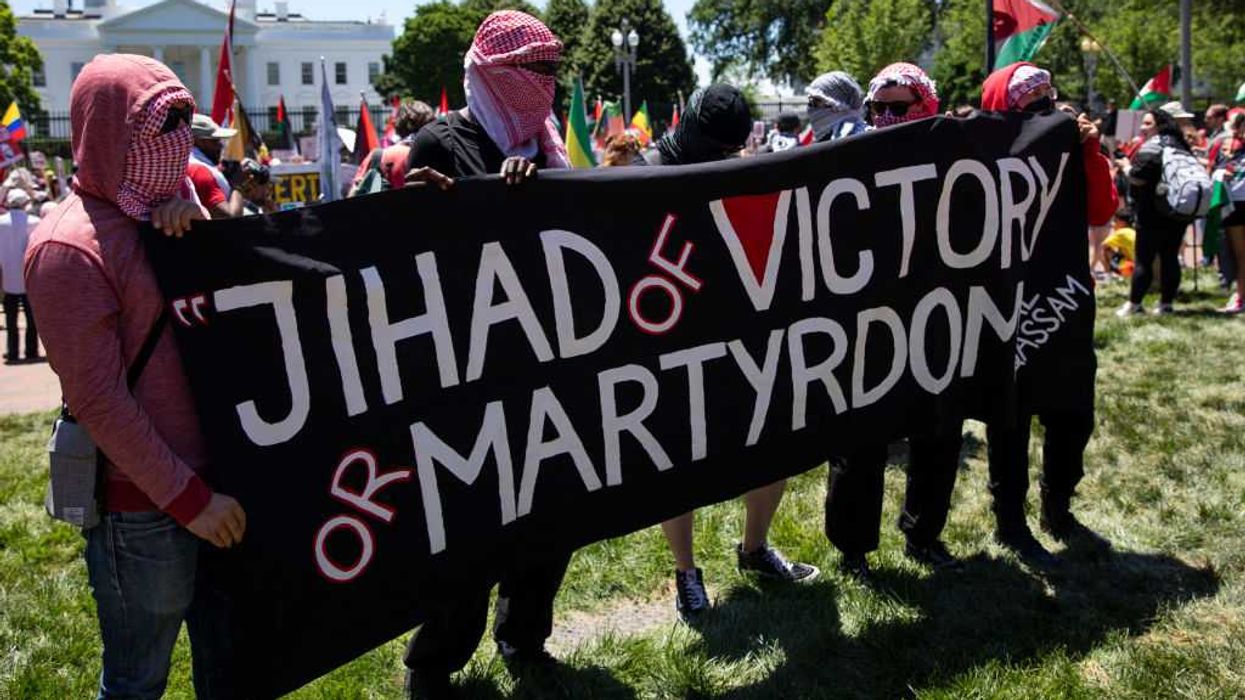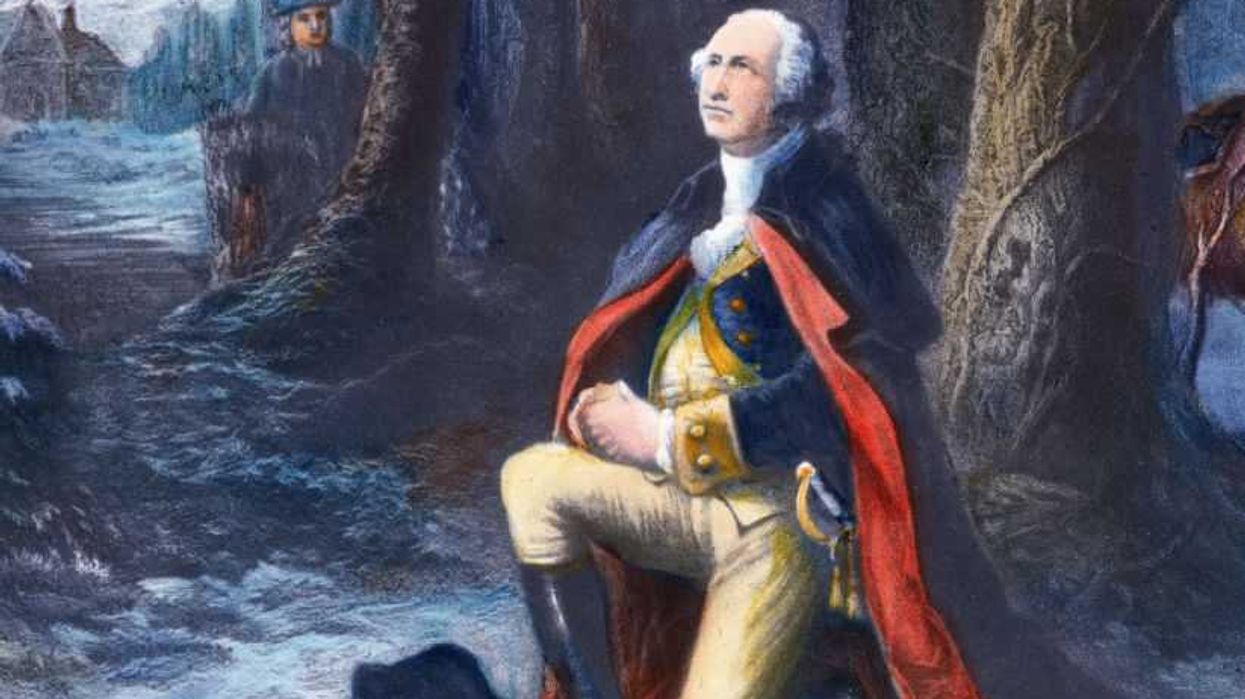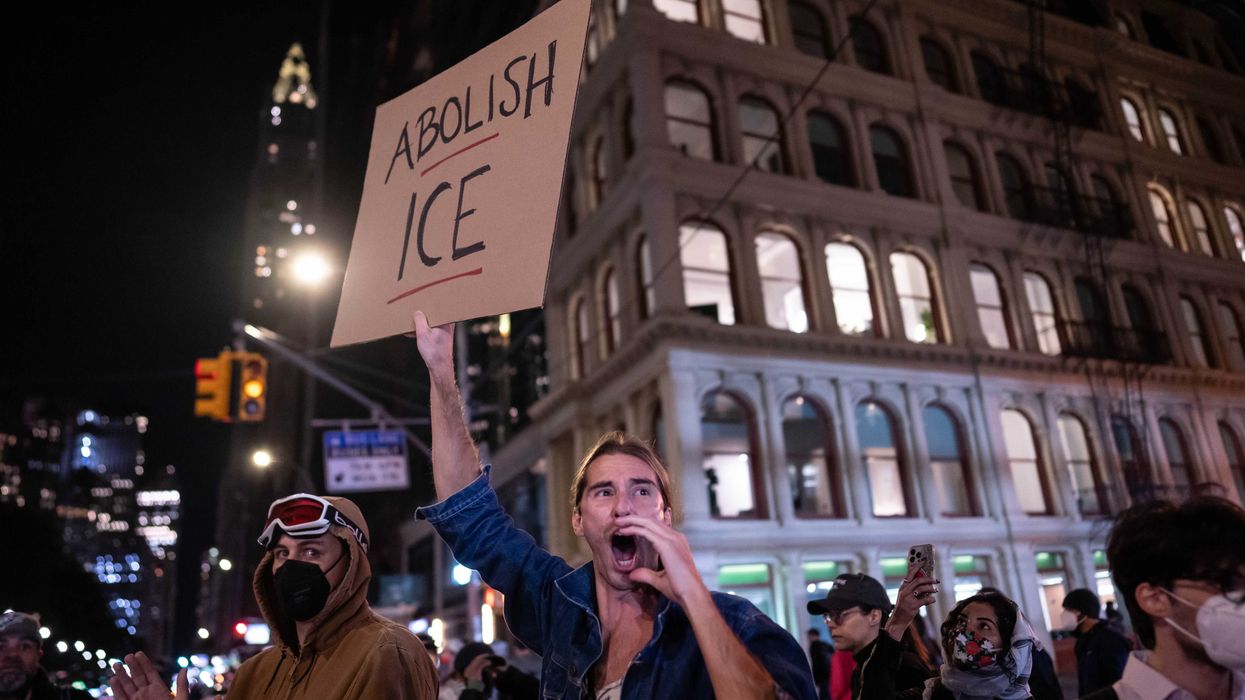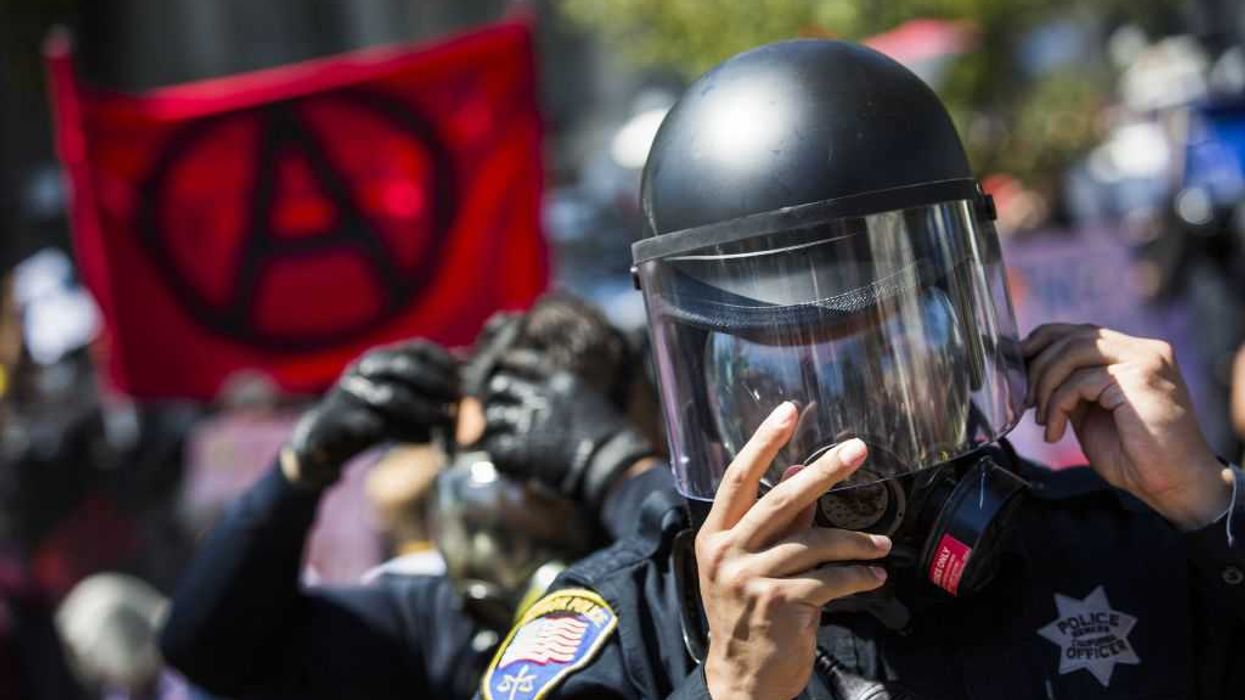In March 1941, Jimmy Stewart, America’s boy next door and recent Academy Award winner, left fame and fortune behind and joined the United States Army Air Corps to fulfill his family mission and serve his country. He rose from private to colonel and participated in 20 often-brutal World War II combat missions over Germany and France. In mere months, the war took away his boyish looks as he faced near-death experiences and the loss of men under his command. The war finally won, he returned home with millions of other veterans to face an uncertain future, suffering what we now know as PTSD. For the next half century, Stewart refused to discuss his combat experiences and took the story of his service to the grave.
RELATED: Why War Veteran and Quadruple Amputee Travis Mills Is Thankful and ‘Tough as They Come’
In Mission: Jimmy Stewart and the Fight for Europe, author Robert Matzen presents the first in-depth look at Stewart’s life as a Squadron Commander in the skies over Germany, and, his return to Hollywood the changed man who embarked on production of America’s most beloved holiday classic, It's a Wonderful Life. Matzen sifted through thousands of Air Force combat reports and the Stewart personnel files; interviewed surviving aviators who flew with Stewart; visited the James Stewart Papers at Brigham Young University; flew in the cockpits of the B-17 Flying Fortress and B-24 Liberator; and walked the earth of air bases in England used by Stewart in his combat missions from 1943-45. What emerges is the story of a Jimmy Stewart you never knew, a story more fantastic than any he brought to the screen.
Matzen joined Glenn on radio Thursday to talk about Mission and the life of one of America's most beloved and iconic cinema stars.
Read below or listen to the full segment for answers to these questions:
• Did Matzen reveal any skeletons that ruined Glenn's view of Stewart?
• Which relatives of Stewart's fought in the Civil War?
• Were the snowy scenes in It's a Wonderful Life shot in the Mojave Desert?
• How did the war change Stewart as a man?
• How many missions did Stewart fly and which one cracked his plane in half?
Listen to this segment from The Glenn Beck Program:
Below is a rush transcript of this segment, it might contain errors:
GLENN: Hello, and welcome -- welcome to the program. I was reading an article about Jimmy Stewart. This new book out that's called Mission. And I learned some stuff about Jimmy Stewart that I really wasn't aware of and especially what was happening with him when he came back to film --
PAT: Glenn, don't you know me?
GLENN: Yeah. Okay.
PAT: Don't you know me, Glenn?
GLENN: So when he was filming that, he and Frank Capra were going through PTSD, which nobody talked about back then.
PAT: Uh-uh.
GLENN: And Jimmy Stewart was quite an amazing guy. Robert Matzen is the author of Mission: Jimmy Stewart and the Fight for Europe. And we wanted to get him on.
Robert, welcome to the program. How are you?
ROBERT: I'm great. Thanks for having me on.
GLENN: You bet.
So tell me what we don't know about Jimmy Stewart.
ROBERT: Well, in the context of It's a Wonderful Life, he had just come back from the most horrific combat experiences over the skies of Europe that you could imagine.
GLENN: Now, he was not -- he was not -- you know, as a celebrity, he could have gone and done anything over in World War II. But he didn't. He really signed up and was like, "No, I really want to fight."
ROBERT: Yeah. He -- the war department and Hollywood both wanted to keep him stateside, of course, because nothing good could come of a Hollywood star being shot down over Germany.
PAT: That's for sure.
ROBERT: So he had to buck those headwinds to get overseas, and he managed to do it. It took him two years.
PAT: And so what -- what exactly was his job when he was over there? What did he do? You said in the skies over Europe. He wasn't a pilot, was he?
ROBERT: He was a pilot. He was a bomber pilot.
PAT: He was a pilot. Wow.
ROBERT: He had been a private pilot in his Hollywood years. That was the first thing he did when he earned a Hollywood paycheck, was learn to fly, and then he bought his own plane. And so he was ready. He wanted to serve. And he wanted to serve as an Army pilot, and that's exactly what he did.
And at first, he was training other pilots stateside that was eating him alive. He wanted to go fight. And finally he did get a combat assignment as a squadron commander in a heavy bomb group that went over to England in 1943.
PAT: This guy was almost too good to be true, wasn't he? An American patriot. American hero. A tremendous actor. Married to the same woman virtually his whole life. Right? No major scandals that we know of. Am I --
GLENN: And if we do, we don't necessarily want to know about them.
PAT: Right.
GLENN: I mean, this is a book -- I want to read it over the Christmas holiday. Because I love Jimmy Stewart. Is this -- are you going to wreck him for me?
ROBERT: No, I'm not going to wreck him for you. I went into this project neutral on the guy. I mean, not a fan, per se. Everybody loves It's a Wonderful Life. Well, almost everybody.
But I grew to admire him tremendously, through learning about the 20 combat missions that he went through and what he was like when he came back. You know, refusing to talk about what it was like over there.
GLENN: So when he was on the set -- because Frank Capra -- what was Frank Capra doing the war?
ROBERT: And Frank Capra was making patriotic films. Films to let Americans know what was going on overseas. Who the enemy was. What our boys were doing over there.
So his experience wasn't like Jim's. But Frank was away for four years from Hollywood, and Jim was away for five. I mean, Jim slammed the door on Hollywood and left it behind.
And so he's coming back as, really, a middle-aged man. There's a photo in the book that's a before shot in 1942 of this fresh-faced Jimmy Stewart. Just got his wings. Second lieutenant.
Two years later, he looks like a haggard old man. By then, it looks like 14 combat missions in three months. So when -- by the time they reached the set of its a wonderful life, they were both feeling, "This is make or break for me." If I don't make this work, my career is over. They were both thinking that.
And so the set was extremely tense. It was nothing like you would think it would be.
GLENN: So it was shot in California. The snowy scene is happening in California in the middle of June. Right?
ROBERT: In the Mojave Desert. At 90 degrees. That's right.
GLENN: In the desert.
PAT: Jeez. Wow.
ROBERT: Yeah.
GLENN: And I got the impression from what the story -- I don't even remember where I read this, but it was about your book. And I got the impression that that was -- it was just rife with problems.
ROBERT: Well, that particular scene was shot at the RKO ranch in Encino. And they had to really invent a new type of snow that could withstand the heat and could still be slushy, could still look and feel like snow. So, yeah, I mean, it was a tough shoot.
But the whole movie -- if you look at the movie, it's an extravagant picture with a tremendous number of setups. They re-created that whole main street of Bedford Falls. A lot of interior shots -- everything that was -- all the bridge sequences where Clarence jumps in the water and Jim jumps in, those were all done in the studio. And that took weeks to get it right. Capra was a perfectionist. A lot went into that movie.
GLENN: And did they have any idea -- did Jimmy Stewart have any idea of what that movie was going to be at the end of it?
ROBERT: No. He was disappointed in how it turned out. He was always a populist in the sense that if the public liked his picture, he liked his picture. If the public didn't react like he wanted, then he didn't like the picture.
And It's a Wonderful Life was made right at the end of the war. You know, a war-weary America I don't think was ready for this particular picture, and it took another ten years before it was embraced. And that was by television. And that's when Jim started to warm up to it, when everybody else did.
GLENN: How did he change -- how did the war change him overall as a man?
ROBERT: Before the war, I spent a fair amount of time talking about his romantic adventures with A-List Hollywood actresses. And he went through all of them.
GLENN: He was a player? Jimmy Stewart was a player?
ROBERT: He was a player. Big-time.
JEFFY: He told you he wasn't going to ruin him for you.
(laughter)
GLENN: Wow. I had no idea.
ROBERT: Yeah.
GLENN: Player. Okay.
ROBERT: Because here he is -- he's 6-4 and 140 pounds.
PAT: Jeez.
ROBERT: And he thought he was just this gangly guy that no one would find attractive. So he had to prove to himself that he was attractive. That was his pre-war thing.
But when he came back, he realized how superficial that was. He didn't need to prove that to himself anymore. He had also proved the other thing that he needed to prove, which was that he was brave enough to represent the Stewart family. And that's what Mission is really all about, is his family mission to serve their country. And he proved that to himself.
So he came back as a mature person who had been seasoned by all this death and devastation. And that's why he was ready to settle down. And he did it beautifully. And he also carved this career that emphasized the darker side of him that had come out of the war. This hardened, tough man came out of the war. And he started to play tough roles.
GLENN: What do you mean his family -- his family had a long history of war --
ROBERT: Oh, yeah.
GLENN: -- heroes?
ROBERT: Both of his grandfathers were in the Civil War. One of them was a hero of the second day of Gettysburg, at Little Round Top. And the other one served with Custer in the Shenandoah Valley. And so -- and that grandfather also named James M. Stewart lived into the 1930s. And Jim learned all about war from someone who saw Lee surrender to Grant at Appomattox.
PAT: Wow.
GLENN: Do these kind of guys exist anymore?
ROBERT: You know, I've been asked that.
And Pat Tillman comes to mind, you know. Someone who just walked away from a very successful public career to serve. But they are few and far between. But even in Jim's time, they were few and far between.
GLENN: Because most people, they just -- they would do their rounds, and they would be seen in the uniform. They would raise money. Raise awareness. And not actually go in and fight.
Was it -- was he a believer in what he was fighting against or just a believer of what he was fighting for?
ROBERT: Boy, that's a great question.
Both. I think both. He was a tremendous believer in the cause. And it was the happiest time in his life, he said that often. He said he was never happier than doing this righteous thing for this righteous cause.
GLENN: That was -- I mean, being a pilot in World War II, it was quite surprising that he lived, honestly. I mean, how many missions did he fly?
ROBERT: He flew 20 exactly. And at one point, on one of his missions, on February 25th, 1944, an anti-aircraft shell hit the flight deck of his B-24 Liberator and blew a hole between his feet, two feet across. And his map case fell out the hole and went down to Germany. And that was one mission too many. When he landed that plane, it cracked in half.
I mean, that's just -- that was his closest brush with death. But he had more than that. And that's what people just don't know. That's the guy -- that's his backstory, when you watch It's a Wonderful Life. He had just been there. And he had just done that.
GLENN: Hmm. Robert Matzen, thank you for the time that you spent on looking at this man's life and telling us the truth about who he really was. Mission: Jimmy Stewart and the Fight for Europe by Robert Matzen. Great gift for anybody like me who just loves Jimmy Stewart and loves a good story of history that you've never heard before. Robert Matzen. Mission is the name of the book.
Thank you so much. Appreciate it.
ROBERT: Thanks, Glenn.
GLENN: You bet. God bless.
Featured Image: Lt. Gen. Valin, Chief of Staff, French Air Force, awarding Croix De Guerre with palm to Col. James Stewart (Photo: US Air Force).

 AASHISH KIPHAYET / Contributor | Getty Images
AASHISH KIPHAYET / Contributor | Getty Images
 Harold M. Lambert / Contributor | Getty Images
Harold M. Lambert / Contributor | Getty Images Adam Gray / Stringer | Getty Images
Adam Gray / Stringer | Getty Images Anadolu / Contributor | Getty Images
Anadolu / Contributor | Getty Images